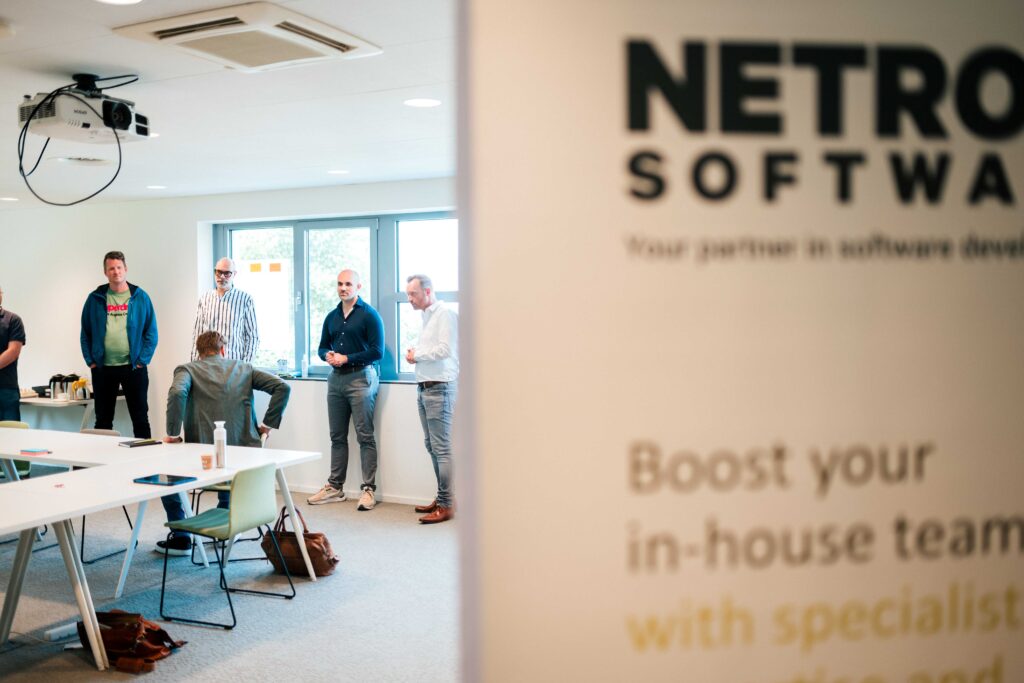
Product Owners operate in a dynamic environment. Competitors release new features on a weekly basis, end users expect continuous innovation, and technological developments evolve rapidly. As a result, the business expects Product Owners to deliver new functionality at an increasing pace. This creates high workloads that, sooner or later, lead to delays on the roadmap. Fortunately, nearshoring offers a way to address this challenge.
Recent research by ProductOwner.nl shows that 38% of all Product Owners experience delays in their roadmap. This situation affects the entire organization: deadlines are at risk, stakeholders become frustrated and lose trust, and development teams are forced to perform under high pressure. As a result, the quality of output comes under significant strain.
Roadmap delays
Roadmap delays present a major challenge for Product Owners. Three key causes can be identified: overly high expectations from management, overly optimistic planning, and insufficient budget.
- Overly high management expectations: Management often lacks sufficient insight into the complexity of the development process and is therefore too optimistic about timelines or functionalities.
- Overly optimistic planning: Product Owners sometimes create unrealistic schedules because they do not account for unexpected setbacks. Examples include scope creep, technical challenges, and new compliance requirements.
- Insufficient budget: Budget constraints often result in limited resources, putting pressure on areas such as maintenance and documentation. This creates a vicious cycle that increases workload and raises quality risks.

Why working harder and in a fragmented way does not help
When delays occur, organizations are often inclined to have development teams work harder and on multiple tasks at the same time. This approach usually backfires. Because of the fragmented way of working, teams must constantly switch between tasks, which results in significant efficiency loss.
Quick fixes in software also create technical debt sooner or later, leading to additional maintenance and delays. This causes teams to lose motivation and perform worse, creating a downward spiral that only reinforces the original problems.
A strategy to structurally resolve delays
For Product Owners, a roadmap delay means the need to consider a different approach. This can be done in three steps.
Step 1: Make the capacity problem visible
- Turn an invisible problem into something tangible with solid data.
- Analyze how much work a team can realistically deliver compared to what is expected.
- Show which revenue or cost savings are lost due to postponed feature development.
- Quantify the time and money spent on fixing problems, rework, and technical debt.
These figures clarify the impact on the business and demonstrate that the solution does not lie in working harder, but in structurally addressing the root causes of the delays.
Step 2: Take inventory of all development activities
Development tasks differ in terms of complexity and repetitiveness. By mapping tasks in a structured way, it becomes possible to organize their execution differently depending on the type of work.
We can distinguish four categories:
- Low complexity, low repetitiveness: Simple and infrequent tasks that can be performed or outsourced with ease.
- Low complexity, high repetitiveness: Routine activities that are suitable for automation or outsourcing.
- High complexity, low repetitiveness: Complex, strategic activities that deliver significant value.
- High complexity, high repetitiveness: Complex tasks that frequently occur within the development process.
Step 3: Organize the execution of tasks
Once all development activities have been clearly mapped, an organization can develop a strategy for the most effective allocation of resources. There are several options for carrying out tasks: automation through AI technology, expanding the internal team, hiring freelancers, or outsourcing via offshoring and nearshoring.
The right choice depends on the nature and complexity of the work, available budget, desired timelines, required quality standards, and the knowledge needed.
Automation with AI
Repetitive tasks are well-suited for automation. For work with low complexity and high frequency, test scripts, AI tools, and workflow automation can deliver quick results. These solutions run continuously, reduce human error in routine work, and allow teams to focus on strategic tasks. However, automation alone rarely resolves capacity issues completely.
Internal team expansion: costly and time-consuming
Hiring additional developers may seem like an obvious choice, but the Dutch labor market for IT specialists is highly constrained. Qualified professionals are scarce and expensive, and the recruitment process can take months. After that comes onboarding, which places demands on existing resources. In practice, it often takes two to three months before new developers are fully productive. During this period, they generate costs but deliver minimal output.
Freelancers: flexibility at a high hourly rate
Freelancers offer flexibility and specialized expertise. Thanks to their extensive experience, they can be deployed quickly, but hourly rates typically range between €75 and €150. A significant risk is that freelancers may leave during an assignment, taking all project-specific knowledge with them and putting progress under pressure.
Offshoring: lower costs, but practical challenges
Offshoring to countries such as India or the Philippines can offer cost advantages due to lower hourly rates. In practice, however, these benefits often do not outweigh the downsides, such as time zone differences that hinder communication, cultural differences that limit proactive feedback, and language barriers that can cause miscommunication. Data protection is also generally better regulated within Europe. As a result, projects often take longer than planned, which can negate the intended cost savings.

Nearshoring as a strategic solution
An increasing number of Dutch organizations are deliberately choosing nearshoring. This approach combines the advantages of different outsourcing models, bringing together cost efficiency, operational reliability, and deep expertise.
Advantages of nearshoring:
- Quality: Highly educated IT specialists with strong English proficiency.
- T-shaped specialists: Both simple and highly complex development tasks can be outsourced effectively.
- Comparable work culture: Developers provide constructive feedback and share a similar work ethic with Dutch employees.
- Fast communication: Minimal time zone differences enable efficient communication between the client and the nearshore team.
- European legislation and regulations: Within the EU, organizations benefit from harmonized laws, strict GDPR data protection, and stable economic conditions.
For Product Owners who want to eliminate their current roadmap delays while also securing a sustainable solution for future projects, nearshoring offers the optimal balance of strategic advantages, operational simplicity, and cost efficiency.

Choosing a nearshoring partner
When selecting a nearshoring partner, several criteria are essential for ensuring a successful collaboration.
- Communication as a foundation
Communication skills and strong proficiency in English form the foundation of effective nearshoring. Clear communication prevents misunderstandings about requirements and ensures smooth project execution. Without strong communication, issues can quickly arise that undermine the entire collaboration.
- Technical expertise and experience
A careful assessment of the technical capabilities of a potential nearshore partner is indispensable. First, the client should determine whether the partner’s technical expertise matches the project requirements. It is also important to verify whether the partner has relevant experience in the client’s industry and domain. A reliable partner can demonstrate concrete successes and references that validate their track record.
- Cultural fit with the nearshore partner
A strong cultural fit forms the basis of a sustainable collaboration. This includes alignment on communication styles, shared quality standards, and a joint approach to challenges.
When there is a strong fit, the external team feels like a natural extension of the client’s own organization. This results in seamless collaboration, enabling both parties to work efficiently within a familiar and shared structure.

Starting safely with nearshoring
For Product Owners unfamiliar with nearshoring, a phased approach is advisable. It is recommended to start with a small pilot project (Proof of Collaboration – POC) to gain experience. In such a project, the Product Owner can assign the external development team a non-critical feature to minimize organizational risks.
Why a Proof of Collaboration?
- Mutual introduction: Both parties become familiar with each other’s ways of working, culture, and expectations.
- Quality assessment: Direct experience with technical solutions and the project approach.
- Process validation: Testing whether development processes align with the organization’s requirements.
- Trust building: Working together on real assignments fosters mutual trust.
- Risk minimization: A small initial assignment limits risks for both parties.
A POC tests all aspects: technical skills, communication patterns, reporting structures, quality control, and integration with existing workflows. After a positive evaluation, the client can consider assigning larger projects to a nearshore partner.
The role of the Product Owner in nearshoring
When an organization chooses nearshoring, the Product Owner plays a constructive role. The responsibilities of a Product Owner in this context can be divided into four categories:
- Task allocation and planning: Determine which tasks (such as complex, strategic decisions) remain in-house and which can be outsourced to the external nearshore team.
- Ensuring security: Establish clear agreements on cybersecurity, ensure compliance with privacy regulations, and implement secure development practices.
- Creating team cohesion: Organize regular online meetings, joint evaluations, and site visits so that the client and the nearshore team get to know each other.
- Remote guidance: Provide clear documentation, frequent status updates, and one-on-one support for individual developers.
Eliminating roadmap delays?
NetRom has 27 years of experience in nearshoring high-code software development. We work with 70 clients across more than 8 countries. At the NetRom Campus in Romania, over 500 university-educated IT specialists deliver innovative solutions for our clients every day. Our specialists are fluent in English, master a wide range of technologies, possess deep domain knowledge, and share the same work ethic as Dutch professionals.
NetRom offers more than software development alone. We act as a strategic partner, actively contributing ideas, providing proactive advice, and helping ensure the success of your IT projects. All of our solutions fully comply with European legislation and regulations regarding privacy and data protection.
Interested in learning how we can support your team? We would be pleased to start the conversation.
Want to hear how other Product Owners are dealing with roadmap delays?
Listen to the ProductOwner.nl podcast: “#187 | Roadmap achterstand wegpoetsen met nearshoring”, featuring Giancarlo Billault-Scaramelli from NetRom Software, who shares valuable insights and practical tips: https://productowner.nl/podcast/.